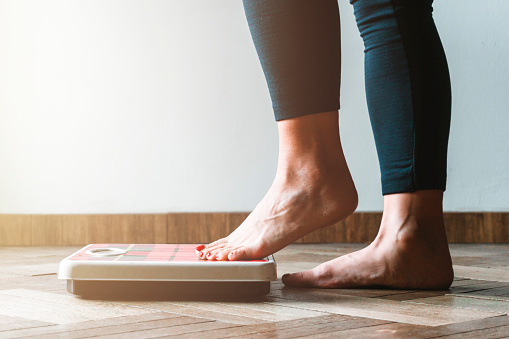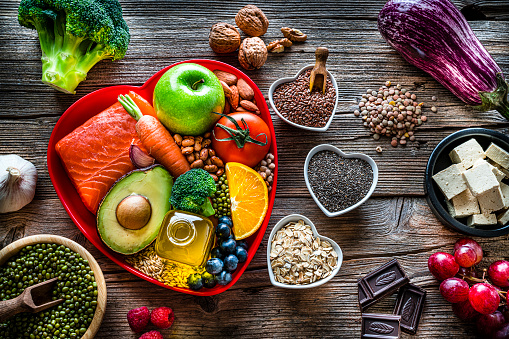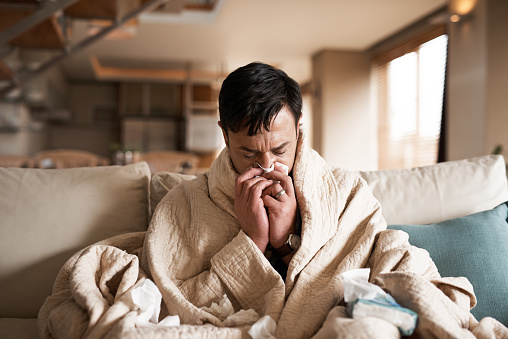What are the macros and calories for the ketogenic diet? I'm going to break it all down for you so you can also get amazing results with keto. I’ll also share the details on the nine specific blood markers to request from your doctor to determine if keto is working for you.
As the best selling author of four books & founder of Keto Kamp where our mission is to educate and to inspire 1 billion people, it is my duty to help you succeed in your health goals.
I'm super grateful you chose this article today. It's going to help you out on your ketogenic journey.
Previously, in this ten-part series on how to master keto, we talked about the very important details around the history of Keto and nuances that define clean keto foods & dirty keto foods and how to deal with common symptoms of keto - like the Keto flu, brain fog and fatigue. So if you haven’t already caught up on the previous articles, I highly suggest you do.
Now we’re going to break down the macros, the calories and the structure for you to get those results you want on keto. As you know, when you go on Dr. Google and you type in “what are the macros for the keto diet?” or “what is the keto diet?” you'll get over 100 million results! That can cause a lot of confusion.
The general percentages for your macros is - 85% of your total calories come from fat, 15% from protein and about 5% from carbohydrates. The issue with just following percentages is that the body is more sophisticated than just calories in versus calories out, which we’re going to talk a little bit more about.
Here's what I want you to understand. You can get your fat and calories from that ketogenic meal in front of you or you can get your fat and calories from your body fat. That's right! The goal here is to teach the body to start burning its own body fat. Keto is not about eating a bunch of bacon and fat and cheese. It's about going low carb enough for the body to start burning its own body fat, allowing your liver to produce ketones to fuel the brain.
It’s important to note, that you actually need to increase your protein intake in the first 30 to 60 days on keto. When you do this, not only is it going to help prevent any muscle loss but protein is unique because it activates satiety hormones and chemicals such as cholecystokinin, leptin, glucagon-like peptide and peptide YY.
All you need to know Keto Kamper, is that this helps you feel satiated & full. This prevents you from snacking. This prevents you from raising insulin in between your meals. That's what we want. So it's very important to get 40 to 50 grams of protein at every keto meal that you eat, especially the first 30 to 60 days.
This is exactly what I teach in the Keto Kamp Academy. So increase the protein, increase the healthy fats and that's going to help you feel satiated & full.
What are the best foods to eat on the ketogenic diet? Some of my favorite protein sources are grass fed grass finished beef, lamb, pastured eggs, bison and wild caught fish. I have a whole list for you in a previous article I did in this series; it's called the Keto Kamp Blueprint, and you can download it for free here.
But let's talk a little bit about the amount of calories you should you have on keto. The human body is not a bank account. It's not a math equation. It's not a calculator. The human body is a complex chemistry lab and we need to start treating it as such.
Do calories matter? Yes. Are they important? No. They are a huge distraction. To what really matters. What really matters is cell metabolism, hormones and reducing inflammation. All the tips I'm teaching you in this article and in all the articles and videos on my keto Kamp YouTube channel.
Food can upgrade or downgrade your biological software. Every bite determines a signal inside of your body. For example, you can eat 1000 calories of brownies versus 1000 calories of a kale salmon salad.
The person who has 1000 calories worth of brownies, they're going to store fat. They're going to have a fluctuation in their energy levels and they're not going to feel like a rockstar.
The person who has 1000 calories worth of a keto friendly meal, they're going to burn fat, they're going to have better energy levels and they're going to have hormones that do their job.
Same 1000 calories, completely different response.
Calories are a distraction. It's time to develop a relationship with the body where we know we had enough food, and we can stop eating. We have mechanisms in place to teach this intuition. There are no receptor sites within the body that count calories. Therefore, we need to stop counting calories.
Here’s my question of the day: Have you ever counted calories or ever been told and maybe you did it yourself, “exercise more, eat less, create a caloric deficit”? Comment below and let me know if you've ever tried it and if it ever gave you a long term results.
The bottom line is this, we can choose to eat high quality, keto friendly foods that will elicit a healthy metabolic response or we can choose to eat poor quality food, dirty keto foods that will elicit a negative metabolic response. The decision and choice is yours. This is why here at keto Kamp we teach you to not focus on weight loss. Instead, focus on health focus on reducing inflammation because we do not lose weight to get healthy, we get healthy to lose weight.
Dr. Berg says that all the time, and he's absolutely correct. When you get healthy, when you start eating healthy keto foods and doing it the right way, the weight will come off as a side effect, your symptoms will go away by default. And that's what we're all about here at Keto Kamp. We look at health from a cellular lens.
Here are some non scale victories I want you to pay attention to. Then I'm going to outline the nine markers to request from your doctor. Pay attention to the number on the scale even take that marker on day one but go seven weeks before you test the number on the scale again, because the number on the scale should not determine whether something is working for you or not working for you.
There can be so many reasons why the number on the scale, your weight, will fluctuate up and down. I'll give you a couple of reasons: soreness from a workout - you'll retain water, which can show on the scale. For you ladies, if it’s your monthly cycle, you'll retain water, it might show on the scale. A poor night's sleep, you'll have higher levels of cortisol, it might show on the scale. It's going to just lead you down a road of frustration and discouragement. We're not about that. So yeah, take it on day one, but also pay attention to non scale victories. Pay attention to how your energy levels are. Are they improving? Do you no longer have to take a nap in the afternoon? What about your sleep? What about your skin? What about specific measurements like body fat measurements? Take some photos. These are very important markers to have and it's just for you to keep track of your results.
Here's the final thing that I want to share with you. These are nine important blood markers that I want you to write down, bring it to your doctor, request your doctor have this done for you and track this. If you see improvements in these markers, then the keto diet that you're following is doing you great good.
As I share this with you, I want to thank you for reading this article and if you're getting any value from this take a second here to comment below and share what you loved and what you learned.
Here it is, get a full lipid panel. Lipid means cholesterol & fats. Get total cholesterol total HDL, total LDL and total triglycerides as well as a test called NMR, Nuclear Magnetic Resonance. An NMR test is going to look at not just your total LDL, but also the size of the particles. LDL is split up into large & fluffy particles and small & sticky particles. The large & fluffy are fantastic, as they actually clear out plaque in your arteries. The small & sticky are the ones that get lodged into your arteries. The NMR test will show the amount you currently have of each type of particle.
Not surprisingly, a pet peeve of mine is when I hear somebody say “my doctor saw that my total cholesterol and total LDL was high, so he wants to put me on a statin.” Let's be clear, more people die of heart attacks or heart disease with normal to low cholesterol than high cholesterol. Simply looking at the total LDL does not give you the full picture; however, looking at the entire scope of your lipids will give you a more accurate picture.
Additionally, you want to look at other inflammatory markers such as High Sensitivity C-Reactive Protein, Fibrinogen and Homocysteine. These are oxidative stress and inflammatory markers that we want to look at in combination with those cholesterol particles, to get a more complete picture. Also, get your A1C done which is your three month average of your fasting blood sugars. Get your fasting glucose done, you could do it by yourself or with a doctor. Fasting insulin is also important to get done. Lastly, a full thyroid panel with the antibodies to see if you have auto immune, and not just TSH, but all the markers T3, reverse T3 (rT3), free T3, T4, free T4.
These are markers that are going to give you the best data to let you know if keto is working for you or not, not the number on the scale, not chasing calories or macros but chasing health. That's what we're all about here at Keto Kamp
The next question I know you're asking is “how do you know if you are in ketosis?” or “how do you test and look for optimal markers of glucose and ketones?” Well, there are five signs. These are clear signs that let you know you're in ketosis and that you're doing a good job. I’m going cover all the details in the next article, which can be found right here.
Click the play button below to watch the video version of this article.
What is the Keto flu and how do you prevent it?
There's two main causes. We're going to talk about how to prevent it and why potassium and other specific electrolytes are crucial on your ketogenic journey.
As the best selling author of three books & founder of Keto Kamp where our mission is to educate and to inspire 1 billion people, it is my duty to help you succeed in your health goals.
As we continue to work our way through this ten part series, we have already covered the very important details around the history of Keto and nuances that define clean keto foods & dirty keto foods. So if you haven’t already caught up on the previous articles, I highly suggest you do. Below are the links.
What is the keto diet and how to do it for weight loss?,
Eat These Keto Foods | Ketogenic Nuts, Cooking Oils, Beverages and More!
Let's talk about the elephant in the room. The keto flu. A lot of people are scared of trying keto because they hear these negative connotations associated with the ketogenic diet. One of them is the Keto flu, which is not fun. When you experience it, it feels like you were hit by a truck, as though you were actually sick, and you may think that keto makes you feel worse as opposed to feeling good.
We obviously don't want that. I can tell you that of the thousands of members that have gone through my Keto Kamp Academy, guess what? Not one of them has experienced the Keto flu! When you do it the right way, you can prevent it and feel like a Keto Rockstar. That is what I'm going to teach you.
You want to make sure you get through all the information because I have a very powerful bonus tip on how to replenish your electrolytes every single day. And if you do it, you're going to feel so good.
So what is the Keto flu? There's two primary causes for the Keto flu. The first one happens when people go “all in” and jump cold turkey into keto, eliminating all carbs, causing a major shift in your body that causes the Keto flu. Not good. The fact is that people are actually experiencing carbohydrate withdrawal symptoms.
The second one is most common. It is an electrolyte deficiency. I call this process electrolyte dupming.
When you are a sugar burner, eating over 200 grams of carbohydrates per day, your kidneys are going to hold on to a lot of water weight. Which is not good because it's gonna make you feel bloated and look bloated & puffy. We don't want that.
But now that you're transitioning into the great land of ketosis, your body is burning fat and what's going to happen is your kidneys are going to release a lot of that excess water weight. This is wonderful because you're going to feel lighter and look lighter; however, there is a problem here. Your kidneys also dump a lot of electrolytes in the process. I call this “electrolyte dumping”. What we want to do is be very strategic with replenishing these electrolytes.
This is why I created something called the Keto Kocktail that I made and I created for the members of my Keto Kamp Academy.
Every single morning consume the Keto cocktail, which consists of: 16 ounces of high quality water, two tablespoons of apple cider vinegar, (Apple Cider Vinegar is great, it can help hydrate you, it can help with fatty liver, it can help alkalize your body and has many other benefits) and one teaspoon of cream of tartar. Wait a minute, Ben, I bake with cream of tartar. That’s right, well cream of tartar is also fantastic because it has a good amount of potassium (I will get into more detail on the importance of potassium later on). So we want to throw in one teaspoon of cream of tartar and then a pinch or two of high quality salt.
I personally use 'Redmond Real Salt’ and I put a pinch or two in my water with the apple cider vinegar and the cream of tartar. Mix it all together. That is a great way to replenish your electrolytes and minerals on keto, have that every single day, at least for the first 30 days as you transition into the great land of ketosis.
Another little hack for you is high quality electrolyte powders. Many of them out there have the wrong sweeteners and wrong artificial things in there. I searched and found ‘Redmond Re-Lyte’, and it is now one of my favorites. My fiance Natassia & I, fight over which one of us is going through it too fast, haha, because it just tastes really good. Well, it also has 1000 milligrams of high quality sodium, 500 milligrams of potassium, 1500 milligrams of chloride and over 60 trace minerals. So it tastes delicious and it hydrates you.
I do have a special coupon code for you for Redmonds Real Salt & Electrolytes. Click this link, and use the coupon code Azadi for 10% off your entire order.
Now it’s time for two very powerful bonus tips.
Before I get into it, I want to ask you the question of the day. Have you ever heard of the Keto flu before? Have you experienced it? Or has it stopped you from starting keto because you were scared of experiencing it. Let me know, in the comment section below, if you ever got the Keto flu or if it stopped you from starting keto, because you were afraid of it.
My first bonus tip is going to be, ‘Eat my top five sources of Keto potassium’. Potassium is one of the most important electrolytes that the human body needs. We require about 4700 milligrams of potassium every single day. If you're more active, you need a little bit more.
Here are my top five sources of Keto potassium:
#1. Beet tops. You're thinking, “wait a minute beets are not keto friendly. They're high in sugar!” I'm not talking about the red beet. I'm talking about the green leaves and the stems that come with the beet. It turns out they are loaded with potassium, a vital electrolyte. A little tip I got from Dr. Eric Berg, chop off the leaves & stems and put it in your freezer then put it into keto smoothies and that's a great way to get some extra potassium. Just one cup of cooked beet tops is loaded with about 1300 milligrams of potassium.
#2. Avocados. I love avocados, not only do avocados have double the amount of potassium in bananas, avocados are also loaded with something called phytosterols, which actually help reduce inflammation in the body. They also have a good amount of vitamin B five which helps the adrenal glands that helps with stress. One whole avocado has about 975 milligrams of potassium, so have one per day.
#3. Spinach. Now this one is a little tricky because for the first 28 days on keto, I advise the members of my Keto Kamp Academy to stay away from spinach because it has high amounts of oxalates. After 28 days have some spinach and if you lightly steam and sauté your spinach you can break down those oxalates. One cup of cooked spinach has about 839 milligrams of potassium. If you are sensitive to oxalates, you might want to skip the spinach.
#4. Wild Caught Salmon. A favorite, I have this once or twice a week. Wild caught is highly preferred over farmed. Farmed fish has high amounts of something called polychlorinated biphenyls (PCBs). This is a known carcinogen. At Keto Kamp we stay away from farmed fish. Instead we get wild caught fish. One eight ounce filet of wild caught salmon has about 839 milligrams of potassium. It also has great omega six & omega three fats for you and lets face it, it is delicious. So have salmon once or twice a week on a ketogenic lifestyle.
#5. Brussel Sprouts. I love Brussel sprouts sautéed with olive oil, garlic & sea salt - delicious! Oh my gosh. One and a half cups of cooked brussel sprouts has a little over 500 milligrams of potassium.
I do have one more bonus tip here for you. I hope you're getting much value from this. I'm having so much fun educating on this.
My second bonus tip here is this: we actually need glucose to help deliver sodium into our cells in order to actually utilize the sodium. Sodium/Salt is not the bad guy, if it is high quality salt. The problem is that when we're doing keto we have low amounts of glucose in the bloodstream, which is good, but how do we deliver the sodium into our cells then?
Here's what I do. I carry a little sea salt case with me, after my workout I lick a pinch of salt off my hand (you may have practiced this in college), because exercise raises cortisol in the body and glucose follows which will help deliver the salt into your cells
So if you're going for a walk, if you're going to go do a workout, any kind of exercise have salt with you. That'll be a great way to accelerate your electrolytes getting into your cells.
Some of your next questions may include, “how many calories do I eat on keto? What are the specific macros? How do I know if I'm having too many carbs or too much fat?” Well, the next article in this series is going to break it all down.
If you have any questions from this article, feel free to post it down below!
If you'd like to watch the video version of this article, click the link below.








